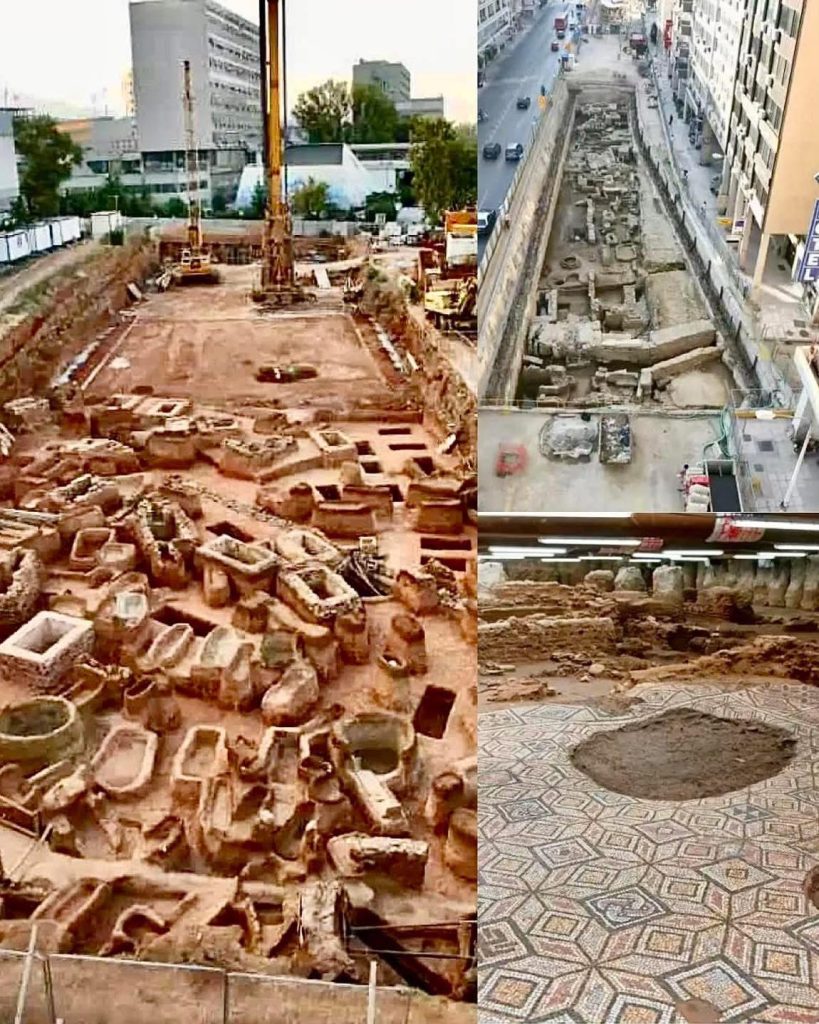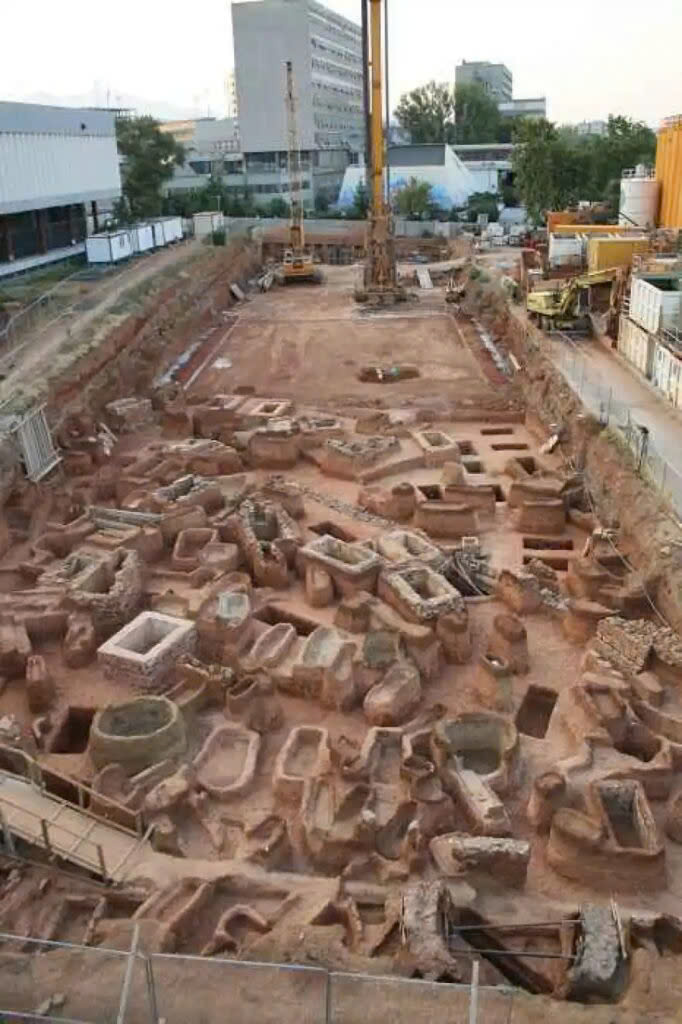A City Beneath the Streets: An Archaeological Marvel
In the heart of Thessaloniki, Greece, an extraordinary archaeological discovery unfolded unexpectedly during the construction of a metro system. What initially seemed like a routine urban infrastructure project quickly transformed into one of the most significant historical revelations in the country’s history. Beneath the bustling city streets, over 300,000 artifacts have been unearthed, each offering a fascinating glimpse into centuries of human civilization that shaped Thessaloniki’s rich and layered history.

Unveiling Layers of History: From Roman Roads to Byzantine Mosaics
The excavation has revealed a treasure trove of historical wonders. At the Venizelou and Aghia Sofia metro stations, workers uncovered a stunning Roman-era marble-paved road, known as the decumanus maximus. This ancient thoroughfare served as the main artery of the city during the Roman period, bustling with activity and connecting key parts of Thessaloniki. Alongside the road, traces of ancient shops and public buildings were discovered, providing a vivid snapshot of urban life in the city centuries ago. These findings shed light on a thriving metropolis that once stood at the crossroads of great empires.
Tombs, Treasures, and Glimpses of Daily Life
Not far from the Venizelou station, at the Fleming site, archaeologists unearthed a Roman cemetery that dates back to the 2nd to 4th centuries CE. The intricate burial practices discovered here reveal much about the lives and beliefs of ancient Thessaloniki’s inhabitants. Elaborate tombs adorned with poignant inscriptions, intricately crafted funerary offerings, and other artifacts tell moving stories of lives lived long ago. Beyond the cemetery, everyday items such as pottery, tools, and coins recovered from marketplaces offer a detailed view of daily life. These remnants of the past paint a vivid picture of how people lived, worked, and interacted within this vibrant urban center.
Transforming the Metro Into a Living Museum
The preservation of Thessaloniki’s past is taking on an innovative form. Rather than relocating the archaeological finds, six metro stations are being designed to double as cultural exhibition spaces. Commuters will have the unique opportunity to encounter the city’s ancient history during their daily travels. Additionally, two dedicated museums are in the planning stages, ensuring these invaluable artifacts will be properly preserved and available for public education and scholarly research. This approach highlights a deep commitment to safeguarding Thessaloniki’s heritage while integrating it seamlessly into the modern urban landscape.
A Cultural Crossroads: Thessaloniki’s Enduring Significance
Thessaloniki’s position as a vital cultural and trade hub has shaped its character over millennia. Strategically located at the intersection of major trade routes, the city served as a crucial node in both the Roman and Byzantine Empires. The discoveries made during the metro excavations reaffirm Thessaloniki’s role as a melting pot of cultures. Through wars, transformations, and periods of growth, Thessaloniki has proven its resilience time and again. These excavations stand as a testament to the city’s historical and cultural significance, demonstrating how it has continually adapted and thrived through the ages.
Harmonizing Modern Development and Heritage Preservation
The Thessaloniki metro project is setting a new standard for how urban development can coexist harmoniously with the preservation of cultural heritage. By incorporating archaeological findings directly into the city’s infrastructure, Thessaloniki is creating a groundbreaking model for other cities to follow. This project not only respects the past but also celebrates it, blending historical preservation with modern innovation. Such an approach ensures that the stories of ancient civilizations are not lost but rather become an integral part of contemporary life.
The Ongoing Journey of Discovery
As construction continues, archaeologists remain hopeful about uncovering even more treasures buried beneath Thessaloniki’s streets. Every new artifact discovered serves as a bridge between the ancient and modern worlds, enriching our understanding of this extraordinary city. These discoveries remind us of the deep historical roots that lie beneath our feet and offer invaluable insights into the human experience over the centuries.

While the metro system was originally conceived as a means to improve transportation, it has also succeeded in transporting us through time. Each layer of earth removed has revealed new chapters of Thessaloniki’s story, from its role in ancient empires to its place as a thriving modern city. The archaeological findings uncovered during this project are more than just artifacts—they are pieces of a timeless narrative that connect us to the people who walked these streets thousands of years ago.
In Thessaloniki, the past and present are intricately intertwined. This ambitious metro project, now an archaeological marvel, ensures that the city’s rich history will remain alive and accessible to future generations. Thessaloniki has always been a city of resilience and transformation, and the treasures unearthed beneath its streets reaffirm its enduring legacy as a crossroads of culture and civilization.





